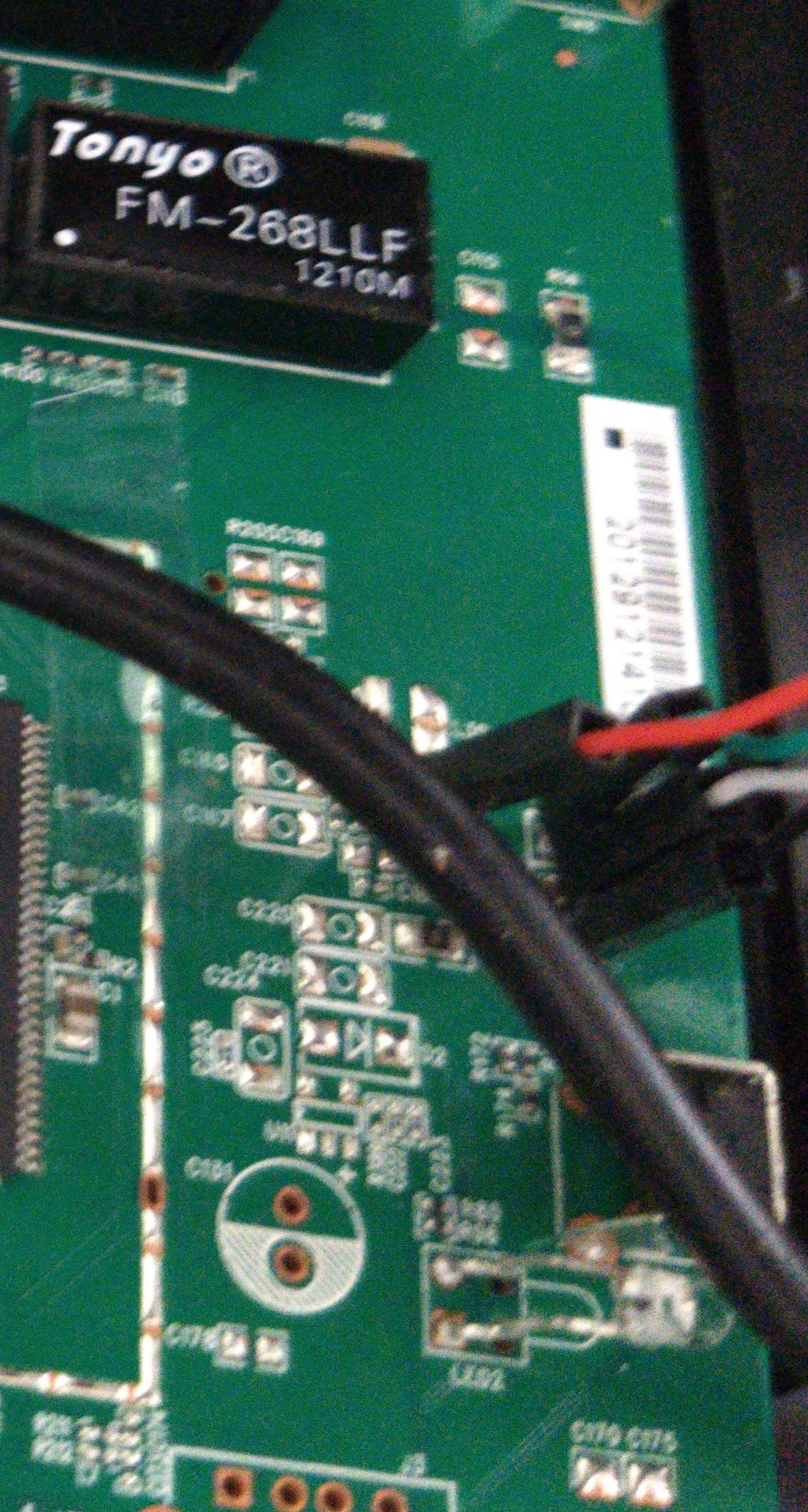Post title goes here#
Thu May 31 22:54:36 2018
It's taken more than a little while to get NixWRT back into the brain
again, partly due to needing a change and partly due to work/family
stuff. Currently in progress: breaking the backuphost.nix monolith
into composable modules, such that I (or a user, when in the fulness
of time the project acquires any users) can add the various parts
separately.
This was prompted by a question on the NixOS Discourse
site
- and the current status, which is experimental, is that a module is a function which gets some options and a pointer to nixpkgs, then operates on the big configuration attrset and returns an augmented version of it. That's handwaving, so let me show you bits of it: in modules/default.nix we have for example
syslogd = options: nixpkgs: configuration:
with nixpkgs;
lib.attrsets.recursiveUpdate configuration {
services.syslogd = {
start = "/bin/syslogd -R ${options.loghost}";
depends = ["eth0.2"];
};
};
and then in backuphost.nix we have
let modules = (import ./nixwrt/modules/default.nix);
# ...
wantedModules = with modules; [
(rsyncd { password = rsyncPassword; })
sshd
(syslogd { loghost = "192.168.0.2"; })
(ntpd { host = "pool.ntp.org"; })
(dhcpClient { interface = "eth0.2"; inherit busybox; })
];
configuration = lib.foldl (c: m: m nixpkgs c) baseConfiguration wantedModules;
This differs from the NixOS module system because we pass per-module
config to the module itself instead of having it root around in one
big configuration attrset. (In theory this means we could have two
modules with the same name but differently customised, which might be
useful). But it's also dependent on the order that the module
functions are applied in, which makes me feel it would be nice to do
some kind of fixpoint thing the way that overlays do. Or at least to
find some nice way to have modules add their configuration to busybox
and for them to be able to refer to busybox and for it to be the
same busybox derivation used by all modules. The same consideration
may very well apply to the kernel.
Anyway, it may be that I need to spend a bit more time on this before
I understand why NixOS modules do it differently and I should switch
to their approach, or it may be that my requirements are not those of
NixOS.
In other news I have bought a proper USB TTL serial cable, so next
time I crack open a new piece of router hardware I can plug it
straight into a USB port on my desktop system instead of needing a
Raspberry Pi as an sshable serial console. The next target is a
TrendNET 712BR
and I may have to think a bit about how to develop on it because
unlike the MT300A or even the Yun it doesn't have an awful lot of
spare RAM. Will have to think of something after I've found out
how lobotomised its u-boot is or isn't.
Solder but no wiser#
Wed Jun 13 06:17:21 2018
Everyone should have at least one hobby that they're no good at and/or dislike doing.

For me that was once playing guitar (still have the instrument, no
longer have the calluses) but these days it's soldering. So after having
stuck three short pieces of paperclip into adjacent holes inside my
Trendnet TEW712BR and showered them with blobs of molten tin, I was
as surprised as anybody when I plugged my USB TTL serial converter in
and found I had a root console.
Notes for others who may follow this way:
- there are four screws in the base of the unit that need removing: two that you can see and two hidden under the stick-on rubber feet.
- My serial connector had no indication on it to say which wire was which. The image quality is not the best, but you may be able to make out that from back to front I've connected green (Rx, unless it is Tx), white (Tx - if it's not Rx) and black (Gnd). Red is V+ and doesn't need to be attached to anything.
- if the converter doesn't work and keeps reporting
pl2303 ttyUSB1: pl2303 converter now disconnected in dmesg over and over again, the workaround may be to unplug your wife's old Galaxy S5 phone from the other USB port. I honestly have no idea what was going on here, but I found a standalone charger for it, so it will be fully charged again by the time small boy wants to use it for his Pokemon.
It turns out I'm slightly ahead of myself in doing this right now, because although I have an image
for Milestone 1 that runs on an Arduino Yun, it's too big - there is only 4MB flash in this little
box. Still, at least I am able to capture a boot log and find out its partition scheme and kernel load address.
Yes, I have working wifi, and the use case for "WiFi access point/range extender" (WiFi in AP mode
via hostapd, bridged to Ethernet, and a DHCP client). This entailed
- restoring the bitrotten support for ar71xx (needed to add config
options for the kernel entry point and location of some OpenWRT patch
sets)
- writing a hostapd module
- adding support for bridges in the code that reads
configuration.interfaces
Mostly fairly straightforward stuff so far - or at least, at a remove
of anything up to two weeks since I did some of this work, I've
forgotten whatever problems I ran into. It's all in
wap.nix , which
still copies a bit too much code from
backuphost.nix but
that will change as soon as I can get my head around fixpoints. To get
it to fit into flash on the device I'm going to need a smaller kernel
and perhaps a smaller busybox.
I will try to fix you#
Thu Jun 21 18:30:36 2018
Last week I had hooked up the serial port on my
upstairs wifi access point. This week I'm posting this blog entry through it. Which is a win, I think.
All is not finished yet, though, because the NixWRT install on it is
too big for the teeny tiny 4MB flash chip and is running in RAM.
Which means I can't put the case back on yet. So I've been working on
ways to make the image smaller, which mostly has been about removing
kernel options I don't need and busybox applets it doesn't use.

To do this, I have changed the module system to introduce - without, I
admit, fully understanding - the fix-point pattern as used in package
overlays. The deal here is that many packages may wish to change the
compile-time options for busybox/the kernel, and simultaneously they
also wish to use the resulting binary - and as packagers we want
them all to use the same binary instead of making a new kernel/busybox
for every package that needs a slightly different one. This is a
mutually recursive dependency, but mercifully it's a mutually
recursive dependency with a base case. What this means is that a
module now takes self and super parameters where the super is a
configuration attrset that it can modify and return, and the self is
the "final" shape of that attrset that it can use for references to
other packages and things that it needs but is not modifying. That's
not an exact explanation of how to use this pattern, but it's
basically the limit of my understanding of it.
Rearranging things in this way has led to a couple of nice features:
for example, I can now add a module to introduce the kernel phram
support that is only needed for TFTP boots (and thus have it excluded
from the flashable image) or the 9p filesystem support that's only
relevant to qemu builds. It also means my image size is now down to
1635k (kernel) plus 2600k (root), but squeezing out the final 300k or
so that I'll need (I don't have an exact number but u-boot and ART partition will want space) is proving
to be somewhat challenging. When this device was produced it was
using a 3.x series kernel and I think 4.9 just unavoidably has a bit
more heft in it.
Incidentally, backuphost.nix is assumed broken by this latest set of
changes. Some day soon I will figure out a workable CI process for
this project.
In other news, finally finished moving stuff off my old Debian shell host to a Nixos installation. Obligatory Bytemark plug goes here.
Shrunk but it came unlunk#
Fri Jun 29 13:17:56 2018
I finally "persuaded" NixWRT to produce an image less than 4MB large
and am successfully posting this through it. But then I decided to
update the Nixpkgs it's built on from a fork that diverged last
February to current master, and guess what? It all broke again!
- It produces an image :-)
- The image is an OK size :-)
- None of my binaries can find their shared libraries any longer :-(
Presently I'm at the "thinking hard about the problem" stage of
debugging, but this may soon progress to the git bisect stage of
debugging, because I haven't had any good ideas yet.

